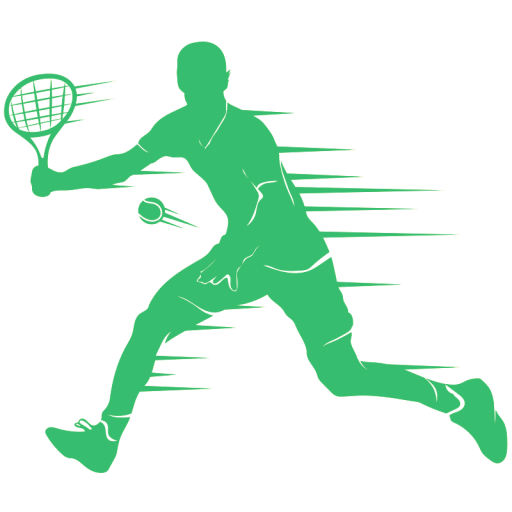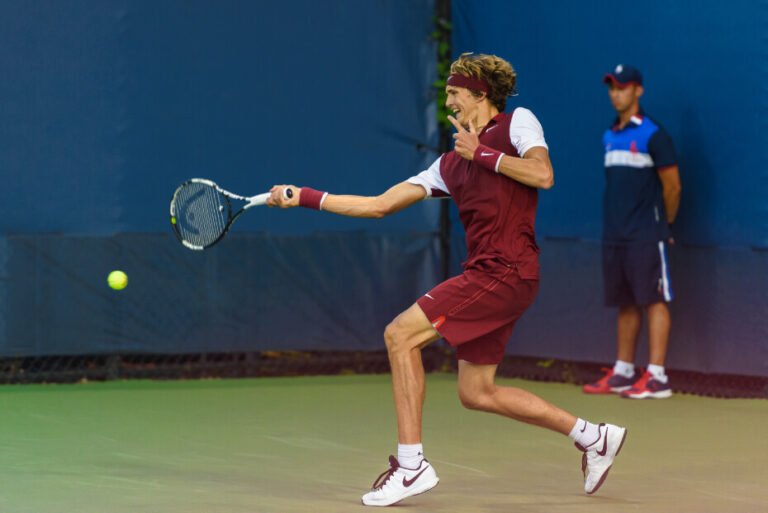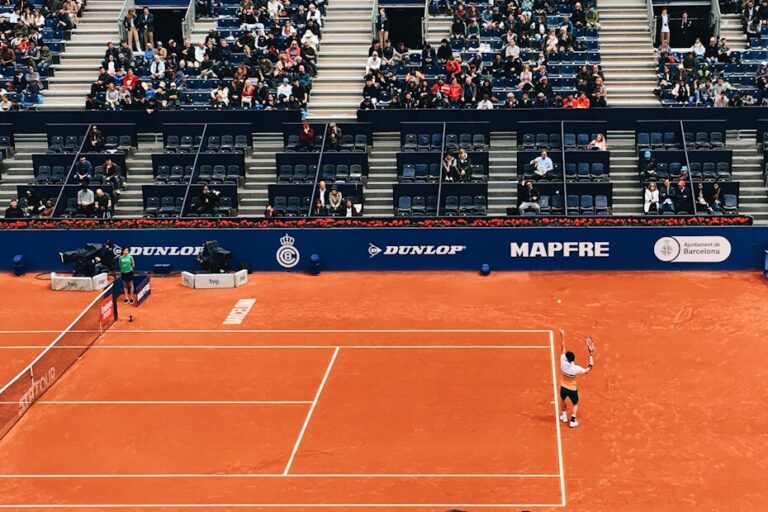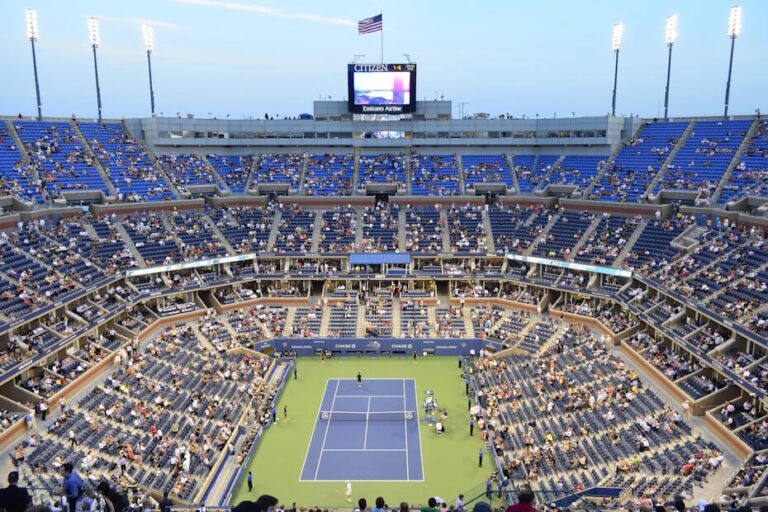In the dynamic world of tennis, understanding the intricacies of the game can make a significant difference in both playing and appreciating the sport. Among these intricacies are the concepts of forced and unforced errors, two terms that are frequently used but often misunderstood.
What are Forced Errors in Tennis?
A forced error occurs when a player is put under pressure by their opponent’s shot, causing them to make a mistake. This could be due to a powerful shot, a well-placed shot, or a shot that forces the player out of position. The key point here is that the error is a direct result of the opponent’s skill or strategy. For example, if a player is forced to run fast to reach a well-placed shot by their opponent and then fails to return the ball correctly, it is considered a forced error.
The causes of forced errors can be varied. They can be due to the opponent’s speed, power, accuracy, or tactical brilliance. An opponent who constantly changes the pace or direction of their shots can force errors by keeping their rival off balance.
The player who can consistently force their opponent into making errors has a high chance of winning the match. They control the game by dictating play and putting pressure on their adversary.
Examples of Forced Errors
There are several scenarios in which forced errors commonly occur:
- Powerful shots: When an opponent hits a powerful shot that forces the player to make a quick decision and execute their shot under pressure, any resulting mistake would be considered a forced error.
- Strategic placement: If an opponent strategically places the ball in a difficult position on the court, forcing the player to stretch or move quickly, any error made during this challenging situation would be classified as a forced error.
- Defensive play: When a player is on the defensive and is constantly under pressure from their opponent’s aggressive shots, any mistakes made in these defensive situations would be considered forced errors.
Tactics to Put Pressure on Opponents and Force Errors
- Deep Groundstrokes: Hitting deep groundstrokes can push your opponent back, making them hit off balance and potentially causing a forced error.
- Changing Pace: Mixing up the pace of your shots can disrupt your opponent’s rhythm and timing, leading to forced errors.
- Strategic Placement: Placing shots in difficult areas, such as wide angles or near lines, can force your opponent to stretch or run, increasing the chance of an error.
- Attack the Weakness: Every player has a weaker shot. Targeting this can put them under pressure and result in forced errors.
- Serve Variation: Changing up serve speed and direction can keep your opponent guessing and increase their chances of making a mistake.
It’s important to note that forced errors are an inherent part of the game and should not be seen as a reflection of a player’s skill or ability. Even the best players in the world make forced errors due to the high level of competition and the challenging nature of tennis.
What are Unforced Errors in Tennis?
Unforced errors occur when a player makes a mistake that was not forced by the opponent’s good play. For example, if a player hits the ball into the net or outside the court boundaries during a rally without being under pressure from the opponent, it is considered an unforced error.
Several factors contribute to these errors. One factor is poor technique, which can cause a player to hit the ball incorrectly, resulting in it going out of bounds or into the net. Another factor is poor decision-making, such as choosing to go for a risky shot when a safer option is available.
The mental and physical state of a player can also significantly affect the number of unforced errors made during a match. Mental factors include distractions, fear, lack of confidence, or overthinking the technique needed for a shot. These can all lead to losing focus, causing the player to make mistakes.
Physical factors include fatigue and lack of physical conditioning. As a match progresses, players may become tired, leading to slower reactions and decreased shooting accuracy. This can result in more unforced errors.
The impact of unforced errors on the outcome of a match can be substantial. A high number of unforced errors often indicates that a player is not performing at their best. It gives the opponent more opportunities to score points and can ultimately lead to losing the match.
Examples of Unforced Errors
Here are a few examples of unforced errors in tennis:
- Hitting the ball into the net: When a player fails to clear the net with their shot, it is considered an unforced error. This often happens when the player misjudges the height or speed of the ball.
- Missing an easy volley: If a player is positioned well to hit an easy volley but fails to make contact with the ball or hits it out of bounds, it is considered an unforced error.
- Double faulting: In tennis, a double fault occurs when a player fails to get both their first and second serves in play. This is considered an unforced error as it is entirely within the player’s control.
- Hitting long or wide: When a player hits the ball beyond the baseline or outside the sidelines, it is considered an unforced error. This often happens when a player misjudges the distance or fails to control their shot properly.
Tips to Minimize Unforced Errors
- Focus on Consistency: Instead of trying to hit winners with every shot, focus on making consistent shots. This approach reduces the risk of making unforced errors.
- Improve Footwork: Good footwork is essential for getting into the right position to hit the ball. Drills that focus on footwork can help a player reduce unforced errors.
- Work on Shot Selection: Choosing the right shot at the right time is crucial. For example, it’s not wise to attempt a drop shot from the baseline; such decisions often result in unforced errors.
- Mental Preparation: Tennis is as much a mental game as it is physical. Maintaining focus and staying calm under pressure can significantly reduce unforced errors.
- Proper Technique: Using correct techniques for different shots can minimize unforced errors. Proper grip, stance, and swing are all essential components of good technique.
The Key Difference Between Forced and Unforced Errors
Forced errors occur when a player makes an error due to the opponent’s good play. The opponent hits a shot that is so good that it forces the player into making an error. It’s not about losing control but about being outplayed.
Unforced errors are mistakes a player makes without significant pressure from the opponent. They usually occur when a player attempts an aggressive shot but fails to execute it correctly. It’s about losing control rather than being outplayed.
Differentiating between forced and unforced errors can provide valuable insights into a player’s performance. Forced errors can indicate that the opponent is playing at a high level, putting pressure on their opponent and forcing them into mistakes. Unforced errors, on the other hand, suggest that a player is struggling with their technique or mental game.







